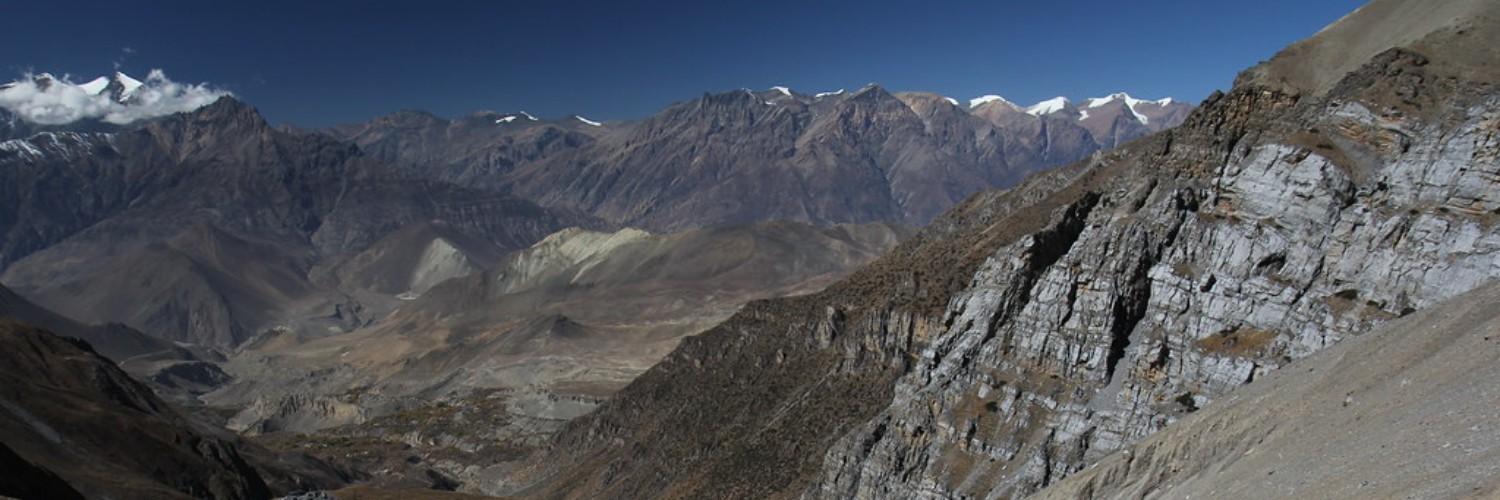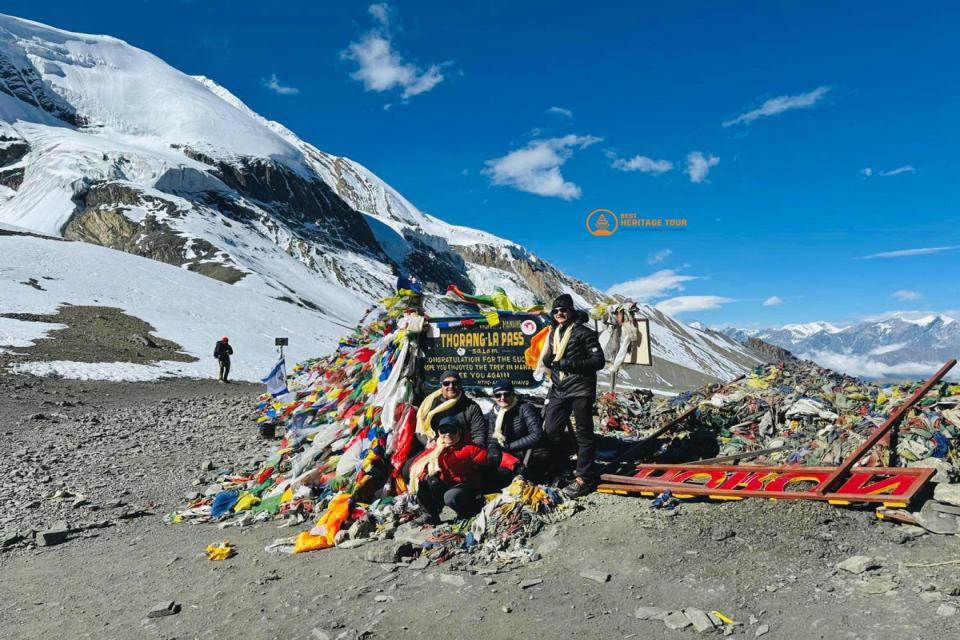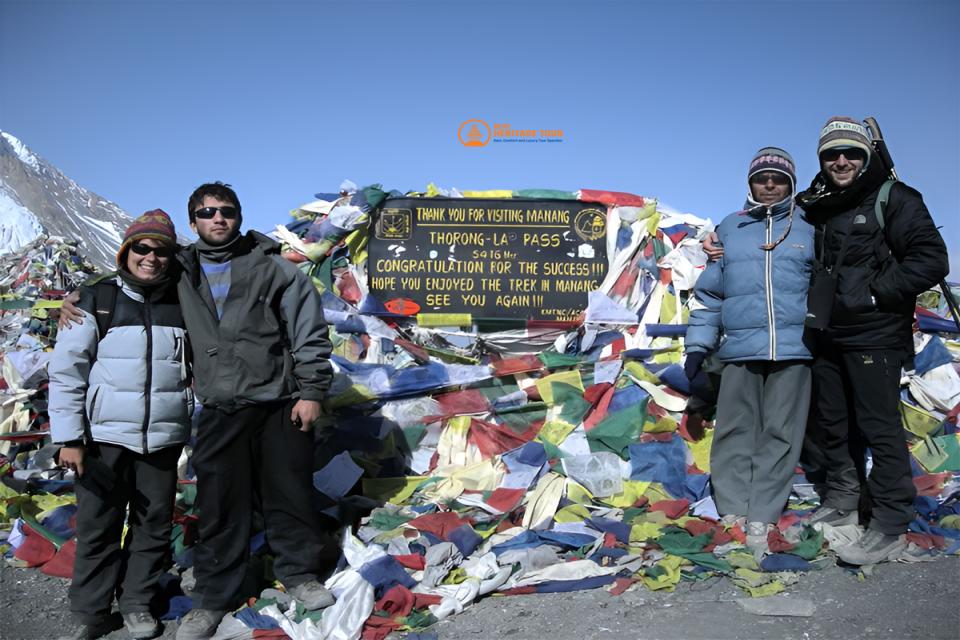The Annapurna Circuit Trek is one of Nepal’s most iconic trekking routes, attracting adventurers from around the world. Renowned for its spectacular mountain vistas, diverse landscapes, and rich cultural experiences, the trek covers a variety of ecosystems - from subtropical forests to alpine deserts - and reaches its peak at the legendary Thorong La Pass (5,416m).
Yet, as breathtaking as the trek is, it is also challenging and requires careful preparation. Whether you’re a first-time high-altitude trekker or an experienced hiker, proper planning ensures safety, enjoyment, and a memorable Himalayan experience.
In this guide, we’ll cover everything you need to know to prepare for the Annapurna Circuit Trek - from physical training and packing essentials to acclimatization, permits, and mental readiness. We’ll also show how Best Heritage Tour can make your journey smoother, safer, and unforgettable.
Understanding the Annapurna Circuit Trek
Before preparing, it’s essential to understand the trek itself. The Annapurna Circuit offers:
-
Duration: Typically 12-18 days, depending on route variations like Tilicho Lake detour.
-
Distance: Around 160-230 km (depending on starting/ending points).
-
Highest Point: Thorong La Pass (5,416m).
-
Terrain: Diverse - river valleys, rhododendron forests, alpine meadows, glacial moraines, and high desert plateaus.
-
Cultural Highlights: Manang monasteries, Mustang villages, ancient trade routes, and Tibetan-influenced settlements.
The trek can be done in either direction: clockwise (Manang to Muktinath) or counterclockwise (Jomsom to Manang). Clockwise is preferred for gradual acclimatization, reducing the risk of altitude sickness.
Physical Fitness: Building Endurance and Strength
The Annapurna Circuit is demanding, and physical fitness is the most critical preparation. Trekking at high altitude requires stamina, strength, and flexibility.
Cardiovascular Training
-
Running or Jogging: 30-60 minutes, 4-5 days per week.
-
Cycling: Builds leg endurance for long uphill sections.
-
Stair Climbing: Mimics uphill trekking at altitude.
Strength Training
Focus on legs, core, and back:
-
Squats and lunges
-
Step-ups with weights
-
Planks and core exercises
-
Deadlifts and resistance band workouts
Hiking Practice
-
Regular hikes with a loaded backpack (10-15 kg)
-
Practice on uneven terrain, rocky paths, or hills
-
Simulate altitude if possible (or use staircases and trekking poles)
Flexibility and Recovery
-
Stretch daily to prevent injuries
-
Yoga and balance exercises improve stability on rough trails
Tip: Start your preparation at least 3-4 months before your trek to gradually build endurance.
Acclimatization and High-Altitude Safety
Altitude sickness (Acute Mountain Sickness) is a major risk above 3,000 meters. Proper acclimatization is crucial to reach Thorong La Pass safely.
Key Acclimatization Tips
-
Ascend Slowly: Avoid climbing more than 300-500 meters per day above 3,000m.
-
Rest Days: Spend at least 1-2 days in Manang (3,540m) before heading higher.
-
Hydrate: Drink at least 3-4 liters per day.
-
Listen to Your Body: Headaches, dizziness, nausea, or shortness of breath are warning signs. Descend immediately if symptoms worsen.
-
Medication: Some trekkers use Diamox (acetazolamide) after consulting a doctor.
Best Heritage Tour ensures proper acclimatization days are built into your itinerary, keeping safety and comfort a top priority.
Gear and Packing Essentials
A carefully packed bag ensures comfort and preparedness for unpredictable Himalayan weather.
Clothing
-
Base layers: thermal tops and bottoms
-
Mid-layers: fleece or down jackets
-
Outer layer: waterproof, windproof jacket and pants
-
Trekking pants, shorts (for lower altitudes)
-
Warm hat, gloves, and buff
-
Moisture-wicking socks
Footwear
-
Sturdy waterproof trekking boots (well-broken-in)
-
Camp shoes or sandals for evenings
-
Gaiters for snow or dust
Backpack Essentials
-
Daypack: 20-30L
-
Hydration system: water bottles or bladder
-
Snacks: energy bars, nuts, and chocolate
-
Trekking poles for stability
Camping and Technical Gear (Optional for Detours)
-
Sleeping bag (-15°C rated recommended for Tilicho Lake extension)
-
Headlamp with spare batteries
-
Sunglasses and high-SPF sunscreen
-
Water purification tablets
Health & Safety Items
-
First aid kit
-
Personal medications
-
Altitude sickness medication (if prescribed)
-
Emergency whistle
Nutrition and Hydration Strategy
High-altitude trekking increases calorie and water requirements. Proper nutrition helps maintain energy levels and prevents fatigue.
-
Daily Calorie Intake: 3,000-4,000 kcal for active trekkers
-
Meals: Dal Bhat (Nepali lentils and rice), soups, noodles, eggs, vegetables, and local fruits
-
Snacks: Energy gels, nuts, dried fruits, and chocolate
-
Hydration: 3-4 liters of water daily. Boiled or filtered water is safest
-
Electrolytes: Sports drinks or rehydration salts help maintain sodium and potassium balance
Mental Preparation
Trekking the Annapurna Circuit is not only physically challenging but also mentally demanding.
-
Prepare for Long Walks: 6-8 hours of trekking daily is common.
-
Weather Variability: Snow, rain, wind, and extreme temperature changes can occur in a single day.
-
Isolation: Some sections are remote with limited human contact.
-
Flexibility: Be ready to adjust plans due to weather, road closures, or health issues.
Mindset matters - patience, perseverance, and curiosity enhance the experience.
Permits and Documentation
To trek the Annapurna Circuit legally, you’ll need:
-
Annapurna Conservation Area Permit (ACAP)
-
TIMS Card (Trekkers’ Information Management System)
Best Heritage Tour handles all permits for you, eliminating hassle and delays.
Health & Safety Considerations
-
Always carry a basic first-aid kit
-
Avoid alcohol at high altitude
-
Use sunscreen and wear sunglasses to prevent snow blindness
-
Monitor for signs of acute mountain sickness
-
Travel with experienced guides in remote areas
Your guide from Best Heritage Tour provides support, local knowledge, and emergency assistance.
Best Time to Trek the Annapurna Circuit
Autumn (September-November)
-
Clear skies and stable weather
-
Moderate temperatures and excellent mountain visibility
Spring (March-May)
-
Blooming rhododendrons and alpine flowers
-
Longer daylight hours
Winter (December-February)
-
Cold temperatures and snow; ideal for experienced trekkers seeking solitude
Monsoon (June-August)
-
Heavy rainfall and landslides; not recommended
Choosing the Right Trekking Route
While the classic Annapurna Circuit is 12-14 days, extensions like the Tilicho Lake detour add stunning scenery and adventure.
-
Classic Route: Jomsom to Manang or reverse, via Thorong La Pass
-
Tilicho Lake Extension: Adds 2-3 days, passing turquoise high-altitude lake and panoramic peaks
-
Mesokanto La Alternative Route: For experienced trekkers seeking remote landscapes
Best Heritage Tour customizes itineraries based on fitness, experience, and interest - ensuring a safe and fulfilling trek.
Travel Insurance and Emergency Preparedness
-
Ensure comprehensive travel insurance covers high-altitude trekking and helicopter evacuation
-
Carry a copy of passport, permits, and insurance documents
-
Learn emergency numbers and communicate plans with your guide
Conclusion: Prepare Well, Trek Safely, Experience Fully
The Annapurna Circuit Trek is more than a journey - it’s a life-changing adventure through Nepal’s most diverse and awe-inspiring landscapes. Proper preparation is the key to maximizing your experience while staying safe and healthy.
From fitness and mental readiness to gear, nutrition, permits, and acclimatization, every detail matters. And with Best Heritage Tour by your side, your trek becomes seamless, enjoyable, and memorable - giving you the freedom to focus on the mountains, the culture, and the adventure.
Phone / WhatsApp / Viber: +977-9851149197 / +977-9810043046
Email: info@bestheritagetour.com / bestheritagetour@gmail.com
Info & Booking: www.bestheritagetour.com
Office: Thamel Marg, Kathmandu, Nepal
Prepare well, trek smart, and let the Annapurna Circuit inspire you like never before.
Author: Best Heritage Tour
Date: 28th October, 2025



